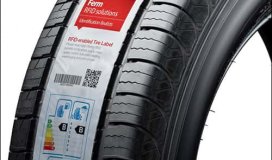Global communications service provider Sigfox has released a technological solution for tracking the locations of goods at a low cost, that serves as an alternative to radio frequency identification or GPS. Several companies are piloting the Spot'It system by tagging and thereby tracking goods through the Sigfox network. The solution is geared toward items that previously were not considered of high enough value to be tracked, or that move through the custody of too many companies, to make the building an RFID infrastructure feasible. Instead, Spot'It is designed to only require a tag that can be tracked while moving through complex supply chains at multiple locations, or while being stored in large facilities, yards or warehouses.
For those within the Sigfox network, Spot'It only requires that they buy a Sigfox communication module that acts as a tag for approximately $2.50 each (in high volume), and that they pay a monthly service fee. They can then simply let the cloud-based system track their goods via each tag's unique ID number.
"IoT is exciting, but from a use-case standpoint, companies are trying to solve a very specific [and basic] problem" says Allen Proithis, the president of Sigfox North America. They need to find their things, he adds, and do it at a low cost.
"The premise is connecting the masses of little things in life," Proithis says, adding that the Internet of Thing Spot'It tags whisper rather than shout their presence. In other words, they transmit an ID number at preset intervals or when awoken. The location data is typically much less precise than with an active or passive RFID system. Because the Spot'It tags can remain dormant until woken up, he says, they have a battery life that can span several decades.
The shortcoming of RFID, according to Proithis, is that lower-cost passive tags can only be tracked when interrogated by a reader, requiring either a fixed reader infrastructure or an individual to carry a mobile reader past the tags. GPS systems are simply too expensive for low-cost items and do not work well indoors. "When you look at three million pallets," he states, "there's nothing that enables affordable tracking."
The Spot'It tag consists of a Sigfox-based transponder that can receive and transmit data. Users can determine how granular the location data needs to be, and can opt for a low-cost service that locates an item within 5 kilometers (3.1 miles) or so, 1 kilometer (0.6 mile) or 500 meters (1,640 feet). The system can also be built with other technologies, such as Bluetooth Low Energy (BLE) beacons, to make that location data much more specific. "Spot'It is a multi-level service," says Michael Orr, Sigfox's sales VP. In fact, about half of the company's customers are also using other technologies integrated with the Sigfox solutions. For instance, beacons could enable workers to gain updates regarding a tagged item via their smartphone.
When the IoT tag transmits to the Sigfox network, the network uses signal strength, as well as its own cloud-based software, to identify that approximate location. Users can then access the information on the Sigfox-hosted server, and receive alerts and access analytics based on their requirements.
For example, if a logistics company were moving products from a warehouse to a customer, that company could attach a tag to one or more pallets being transported. As each tagged pallet was loaded onto a truck and then transported to the customer's location in another state, the system would identify the approximate movement of that load, and could send an alert if the load were delayed or seemed to be in the wrong location.
More info visit rfidjournal.com


